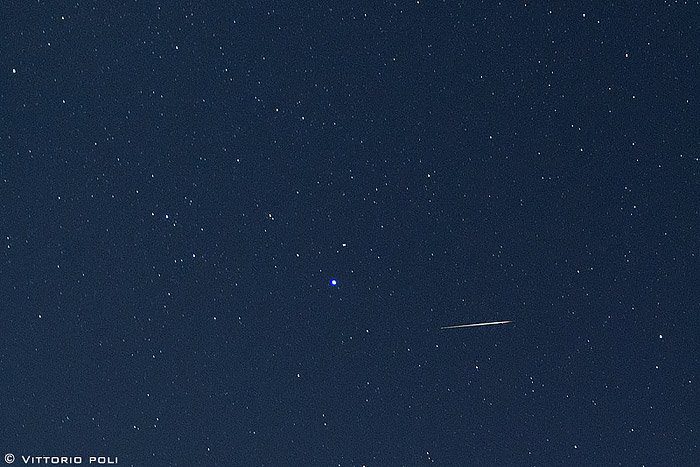Unlike many meteor showers, the Draconids last only a few minutes. On October 8, 2021, look for these meteors in the night and early evening. People can even see some on the nights before and after the event. Luckily, the thin crescent moon sets before nightfall, thus the Draconid shower will not be stopped this year. The point where the meteor shower will take place is near the head of the constellation Draco the Dragon. Because of this, the best point to see the Draconids is from the Northern Hemisphere.
The Draconid meteor shower in October is also known as the Giacobinids. In 1933 and 1946, this shower created beautiful meteor outbursts, with hundreds of meteors showering every hour. In 2011, people in Europe had seen about 600 meteors every hour.
The Draconid shower happens on October 6 and October 10. The best time to watch the shower is most likely on the evening of October 8. Also, may be visible on the evenings of October 7 and 9. Make sure to notice a gloomy sky. The Draconid meteors are seen, they radiate from Draco the Dragon’s head, near the stars Eltanin and Rastaban.
To see Draco’s stars from the Southern Hemisphere is meant to be very close to the equator. If you live in northern Australia, like Darwin, which is located at 12 degrees south latitude. If this is the place then around night in early October, you may be able to see the stars Rastaban and Eltanin much close to the northwest horizon. These stars would appear in the evening. Because of this, Draco’s head won’t be visible again until the next evening.
The shower’s point, winged Dragon, fly high in the October sky after the sun sets, the Draconids are clear in the evening more than the morning. The point gets lower in the sky as it gets dark, at any place on earth.
There’s no need to find the Draco the Dragon to view the Draconids. These meteors go around in all directions across the sky. Finding Draco is not so difficult and is a lot of fun.
Without their main comet nearby, the Draconids isn’t a huge shower. They barely release 5 meteors every hour.
This yearly meteor shower takes place when Earth’s orbit crosses the path of Comet 21P/Giacobini-Zinner. This comet dust collides with the Earth’s upper atmosphere and gets converted as Draconid meteors. The comet orbit for around 6.6 years. It’s almost six times further away from the sun than its farthest point from the sun than it is at its closest position. It is farther than Jupiter at aphelion, which is its most distant point. It is about the Earth’s distance from the sun at perihelion, which is its closest point to the sun.
This shower has been known to rain down hundreds or even thousands of meteors in an hour which occurs very few times when the highest shower point aligns with the comet’s perihelion.
The recent perihelion was on September 10, 2018. The same day, Comet 21P/Giacobini-Zinner went past Earth which happened for the first time in 72 years. Because of that, the Draconids had a huge meteor burst in 2018. the photos of the comet are also available.
This comet completes the orbit every seven years, this tells that the next perihelion will be in 2025. So, there’s no expectation of an outburst this year, but there’s no certainty that it won’t happen.

